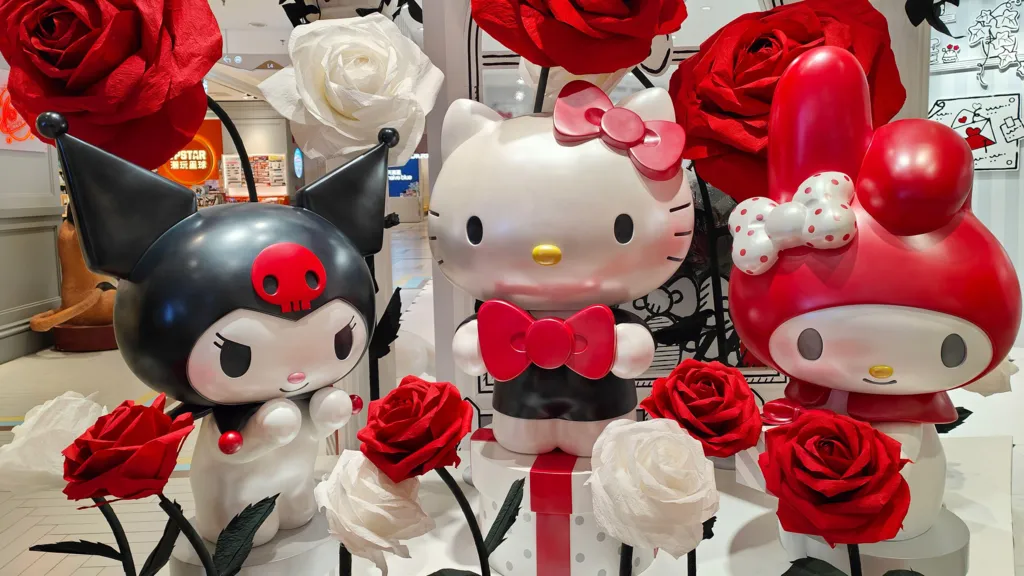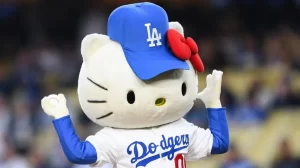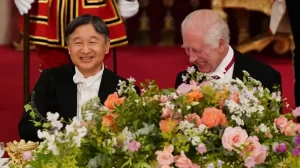How Japan’s youngest CEO transformed Hello Kitty
3 min read
Hello Kitty was created on 1 November, 1974

Hello Kitty was created on 1 November, 1974
Hello Kitty, one of Japan’s most cherished icons, is celebrating her 50th anniversary amidst a remarkable transformation at Sanrio, the company that brought her to life. While Hello Kitty is the second-highest grossing media franchise globally—trailing only Pokémon and surpassing even Mickey Mouse and Star Wars—Sanrio has faced significant financial challenges over the years, experiencing cycles of prosperity and downturn.
Despite her enduring popularity, Sanrio struggled in recent years as interest in Hello Kitty began to wane. The company had previously experienced sales surges in 1999 and 2014, both fueled by the character’s widespread appeal. However, these boosts were not sustainable, as noted by Yasuki Yoshioka from SMBC Nikko investment firm. “In the past, its performance had many ups and downs, as if it was on a rollercoaster ride,” he remarked.
A turning point came in 2020 when Tomokuni Tsuji, the grandson of Sanrio’s founder Shintaro Tsuji, assumed the role of CEO at just 31 years old, making him the youngest chief executive of a listed company in Japan. Under his leadership, the company shifted its marketing strategy, aiming to elevate the profile of its other characters rather than solely relying on Hello Kitty.

This shift resulted in Hello Kitty losing her status as Sanrio’s most popular character. A recent poll revealed that Cinnamoroll—a white puppy with blue eyes and a tail resembling a cinnamon roll—has now taken the lead. Tsuji emphasized that the goal was not to diminish Hello Kitty’s popularity but to enhance the recognition of other characters in Sanrio’s lineup.
Sanrio’s portfolio has expanded beyond just cute characters. For instance, Aggressive Retsuko (or Aggretsuko), an angry red panda, resonates with the frustrations of modern working women and gained popularity through a cartoon series that transitioned to a hit on Netflix. Another notable character is Gudetama, a “lazy egg” who humorously addresses themes of depression and existential ennui with darkly comedic one-liners.
In addition to diversifying its character offerings, Sanrio ramped up its international marketing efforts and strengthened its fight against counterfeiting. “We are now using artificial intelligence to detect fake products and to make removal requests,” Tsuji explained. Collaborations with well-known brands, such as Starbucks, Crocs, and the Los Angeles Dodgers, have been central to this new marketing strategy, allowing Sanrio to keep its characters in the public eye throughout the year.

Tomokuni Tsuji’s familial ties to the company helped him implement these significant changes. In Japan, nearly a quarter of listed companies are run by founding family members, including major firms like Toyota and Canon. This cultural phenomenon is rooted in the strong societal recognition of family-run businesses, as noted by Professor Hokuto Dazai of Nagoya University of Commerce and Business.
While Tsuji enjoyed certain advantages due to his family name, he still faced resistance from other company executives. He openly acknowledged conflicts with his grandfather regarding the company’s direction. However, after a year of dialogue, his grandfather ultimately encouraged him to manage the company as he saw fit.
The results of Tsuji’s leadership have been promising. Within two years of taking over, Sanrio returned to profitability, which Yoshioka described as a “beautiful V-shaped recovery.” The company’s stock price has increased tenfold since 2020, giving Sanrio a market valuation exceeding 1 trillion yen (approximately $6.5 billion).

An unexpected incident earlier this year added a layer of intrigue to Hello Kitty’s legacy. In a television interview, Sanrio executive Jill Koch sparked controversy by declaring that “Hello Kitty is not a cat” but rather a British schoolgirl. This revelation took many fans by surprise and ignited discussions on social media about Hello Kitty’s true identity.
Tsuji remarked on this matter, stating, “Hello Kitty is Hello Kitty and she can be whoever you want her to be.” He added that the choice to have her originate from London may stem from the city’s allure among Japanese girls during her creation.
As Hello Kitty marks half a century since her debut, the character’s origins may remain partly shrouded in mystery. Nevertheless, under Tomokuni Tsuji’s innovative leadership, Sanrio is poised for a vibrant future, blending nostalgia with modern marketing strategies and diverse character offerings.